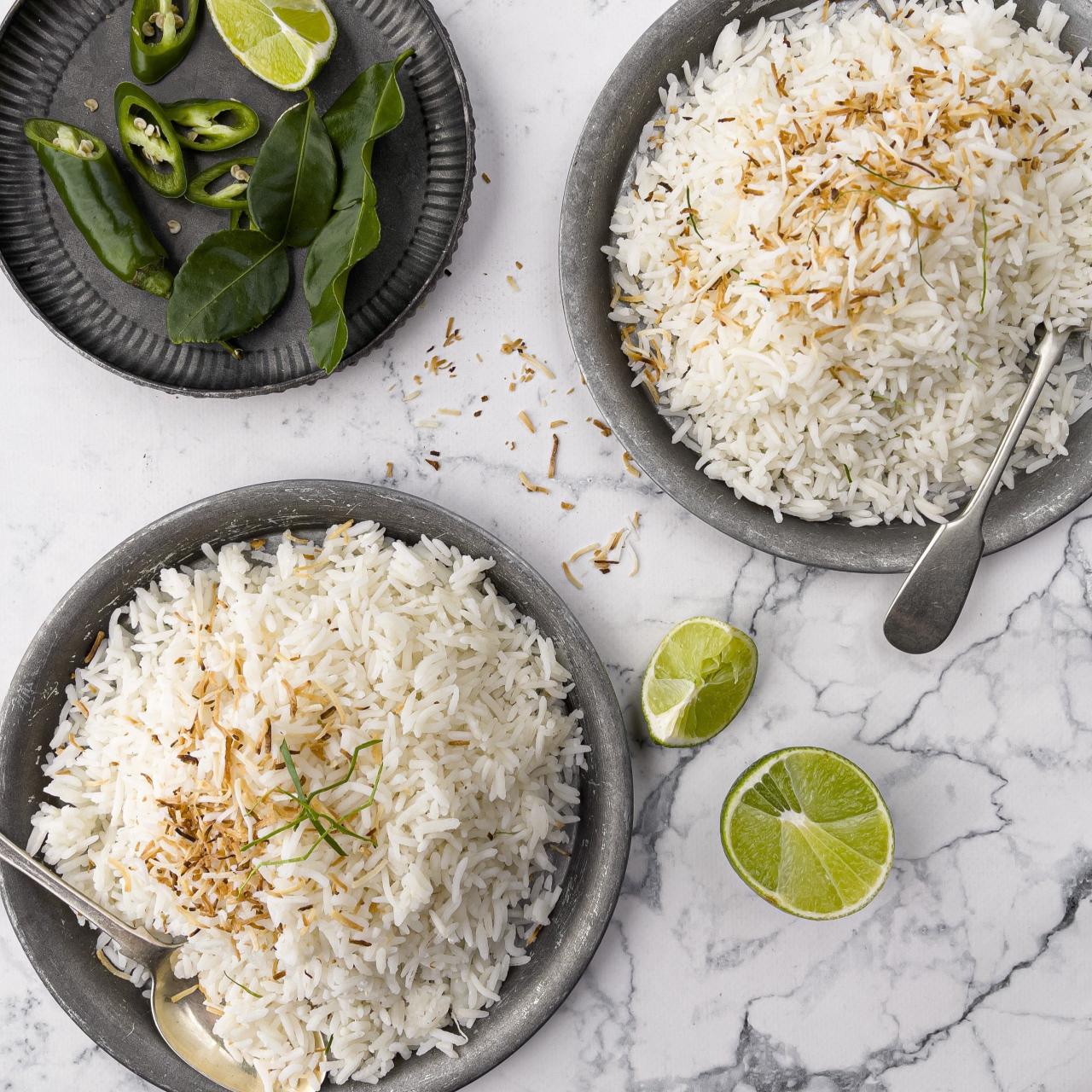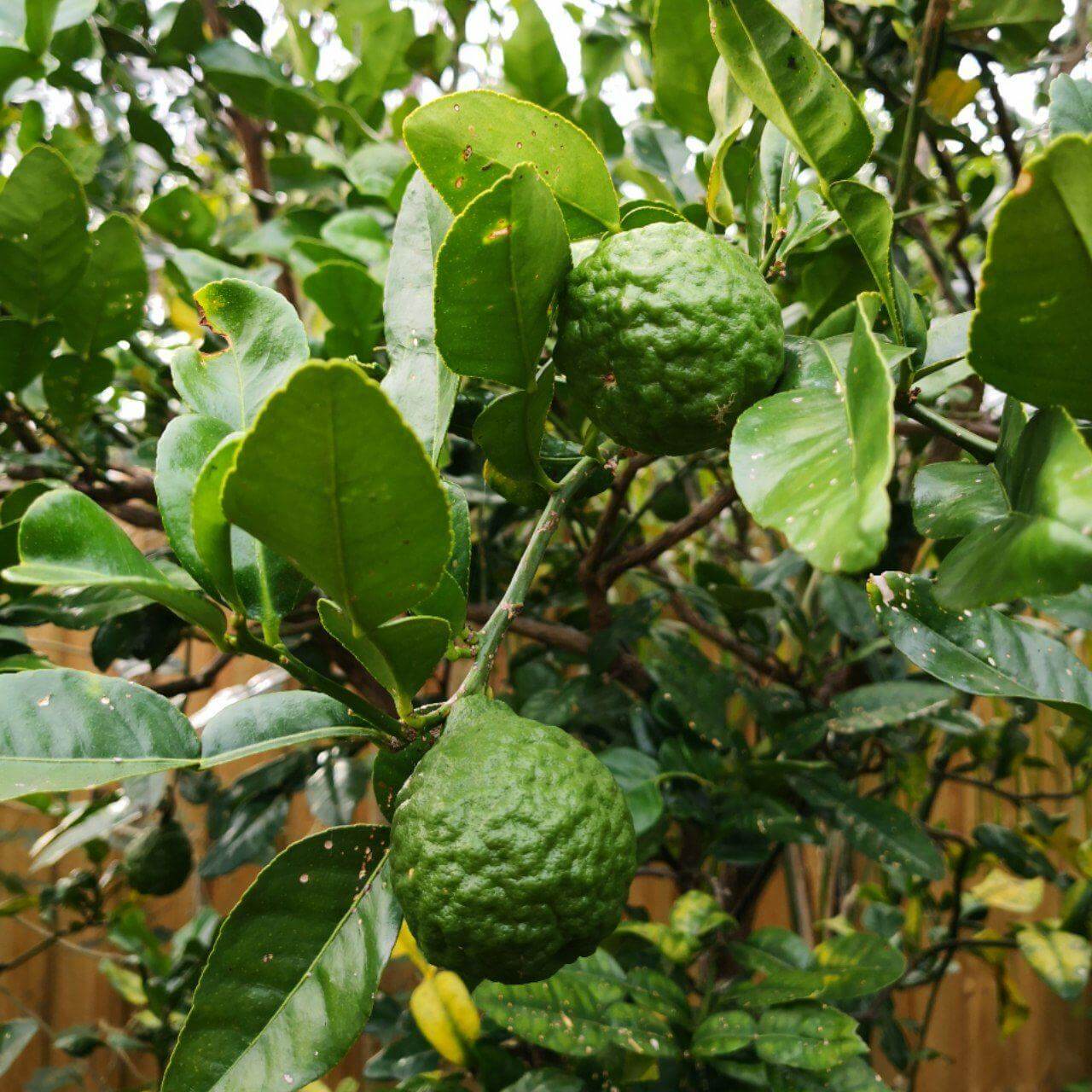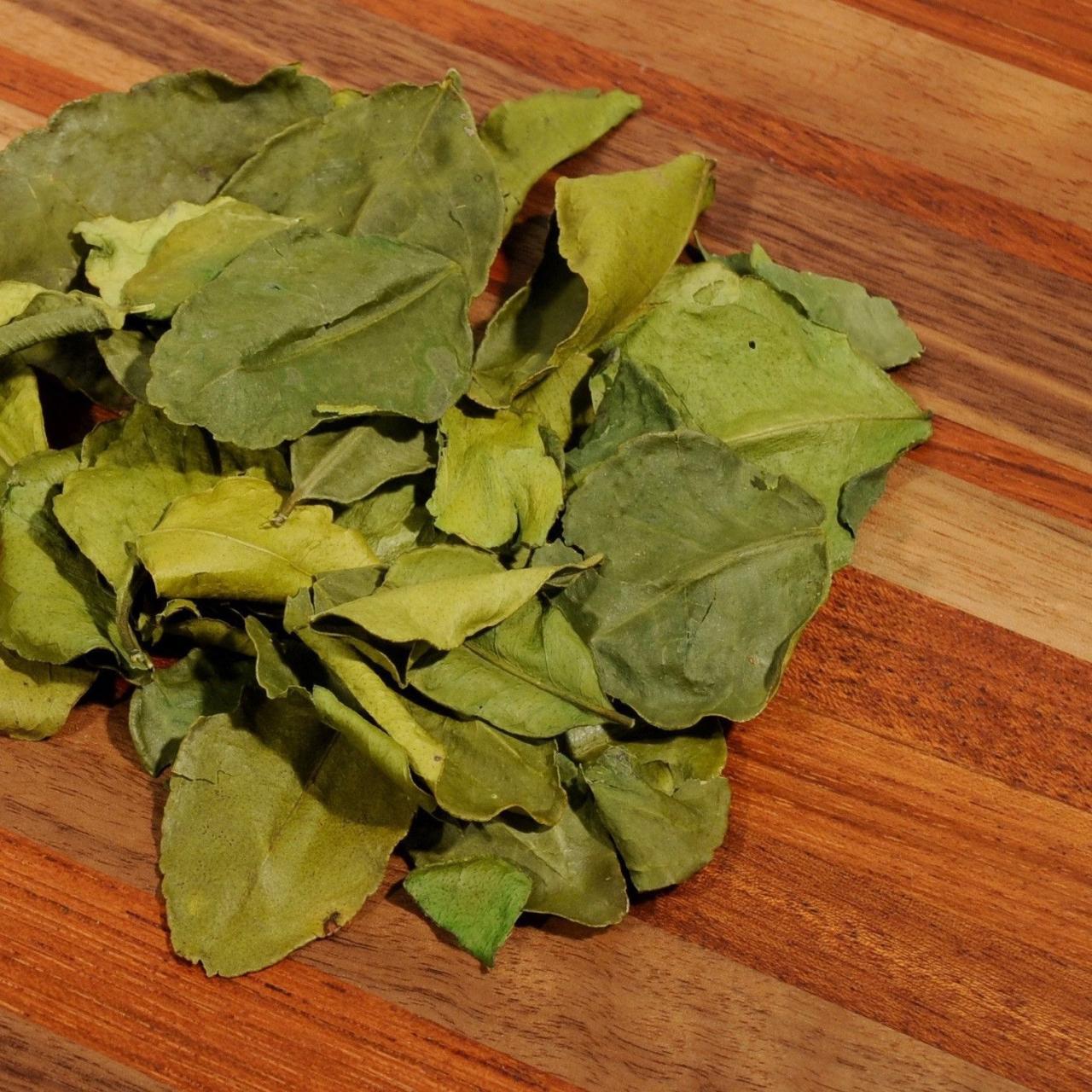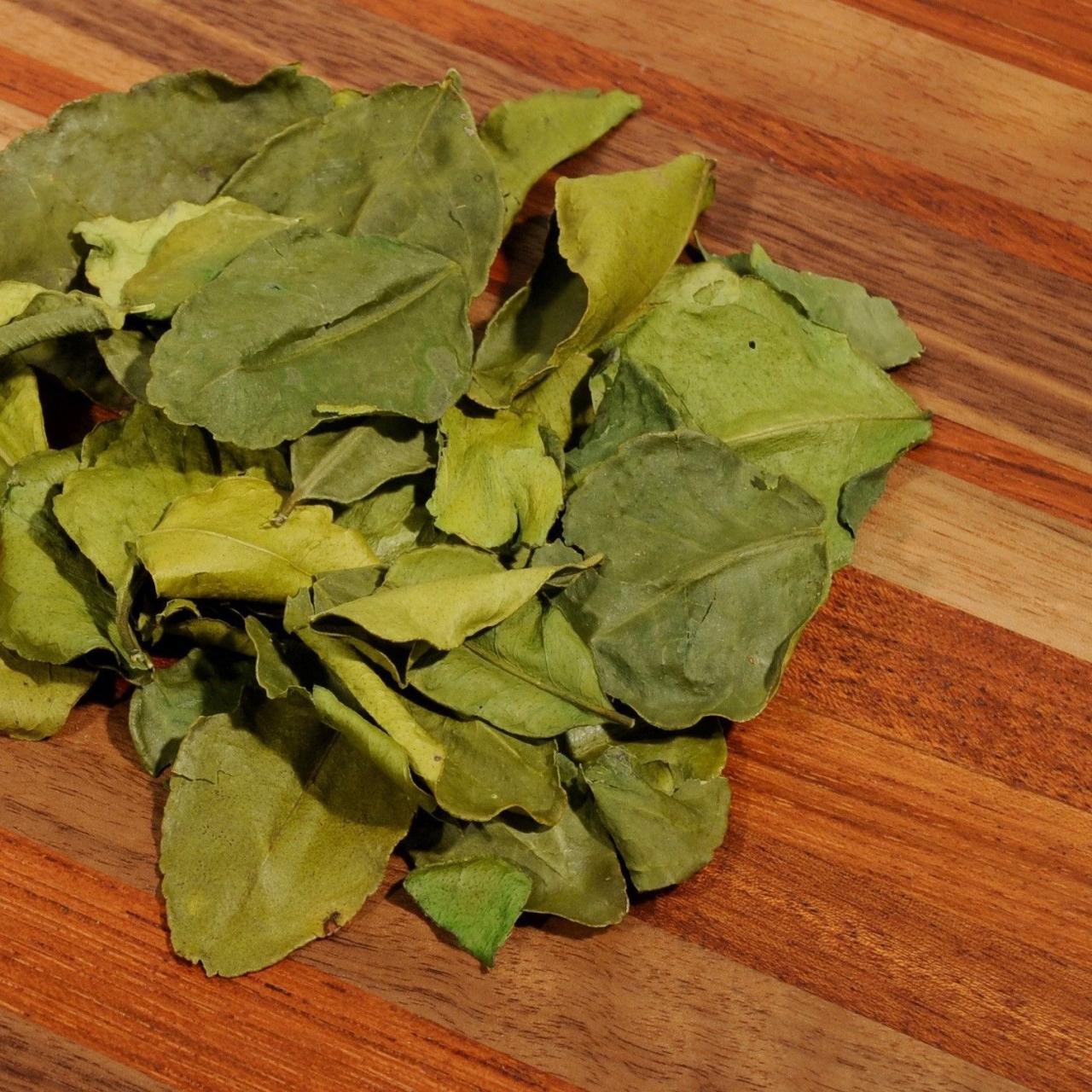How to Add Kaffir Lime Leaf to Your Cooking: Expert Tips for Flavorful Results takes you on a culinary journey to discover the unique and aromatic world of kaffir lime leaves. These fragrant leaves, native to Southeast Asia, are a staple ingredient in many regional cuisines, adding a distinct citrusy and herbal complexity to dishes.
From selecting the freshest leaves to incorporating them into your favorite recipes, this guide will equip you with the knowledge and techniques to elevate your cooking with the distinctive flavors of kaffir lime.
Kaffir lime leaves, with their distinctive aroma and flavor, add a touch of exoticism to any dish. Whether you’re a seasoned chef or a home cook venturing into new culinary territories, this guide will help you unlock the secrets of using kaffir lime leaves to create dishes that are both flavorful and aromatic.
What is Kaffir Lime Leaf?

The kaffir lime leaf, also known as makrut lime leaf, is a fragrant and flavorful ingredient commonly used in Southeast Asian cuisine. It’s a key component of many traditional dishes, adding a unique zest and aroma that’s both refreshing and complex.
Appearance, Aroma, and Flavor
Kaffir lime leaves have a distinctive appearance, with two lobes that resemble a folded butterfly wing. They have a deep green color and a slightly leathery texture. The leaves release a strong, citrusy aroma when bruised or crushed, reminiscent of lime and lemon, but with a more floral and slightly peppery note.
Adding kaffir lime leaves to your cooking can elevate dishes with their unique citrusy aroma and subtle flavor. While the leaves themselves are not eaten, their fragrant oils infuse into soups, curries, and sauces, creating a truly captivating culinary experience.
For a comprehensive guide on how to utilize this versatile ingredient, be sure to check out How to Make the Most of Kaffir Lime Leaf in Your Cooking: Expert Tips and Recipes , where you’ll find detailed information on preparation techniques, recipes, and more.
Whether you’re a seasoned chef or a curious home cook, this guide will help you unlock the full potential of kaffir lime leaves and transform your dishes into culinary masterpieces.
This aroma translates into a flavor that’s both tangy and slightly bitter, with hints of camphor and spice.
Origin and Cultural Significance
The kaffir lime tree,Citrus hystrix*, is native to Southeast Asia, particularly Thailand, Malaysia, and Indonesia. It’s been cultivated for centuries, and the leaves have long been an integral part of the culinary traditions of these regions. In Thai cuisine, for example, kaffir lime leaves are used extensively in curries, soups, and stir-fries, adding a distinctive aroma and flavor that’s deeply ingrained in the country’s culinary heritage.
Culinary Uses of Kaffir Lime Leaves, How to Add Kaffir Lime Leaf to Your Cooking: Expert Tips for Flavorful Results
Kaffir lime leaves are incredibly versatile in the kitchen, adding a unique dimension to both savory and sweet dishes. Their citrusy aroma and flavor can be used to enhance the taste of various ingredients, from meats and vegetables to seafood and desserts.
Savory Dishes
Kaffir lime leaves are frequently used in curries, soups, and stir-fries, where they infuse the dish with their characteristic aroma and flavor. They are also added to marinades for meats and seafood, imparting a citrusy zest that complements the protein.
In some Southeast Asian cuisines, kaffir lime leaves are even used to wrap fish or other ingredients before grilling or steaming, adding a delicate citrusy flavor to the dish.
Sweet Dishes
While primarily known for their savory applications, kaffir lime leaves can also be incorporated into sweet dishes. They are often used in desserts like cakes, puddings, and ice creams, adding a refreshing and slightly tangy twist to the sweetness. The leaves can also be infused in syrups or teas, creating a unique and aromatic beverage.
Kaffir lime leaves are a versatile ingredient that can be used in both fresh and dried form. Fresh leaves offer the most intense flavor and aroma, while dried leaves can be used to infuse oils or create a flavorful powder.
Choosing and Preparing Kaffir Lime Leaves

Selecting the right kaffir lime leaves is crucial for unlocking their full flavor potential in your dishes. The freshness of the leaves directly impacts their aroma and taste, making it essential to choose carefully.
Just as you can multiply your culinary delights with the aromatic zest of kaffir lime leaves, you can also double your collection of lush greenery with the art of propagation. If you’re looking to expand your indoor jungle, check out Double Your Ivy Collection: Propagation Tips for Stunning Growth for expert advice on growing your own ivy from cuttings.
Back to the kitchen, remember that the leaves of the kaffir lime tree are best used fresh for maximum flavor, adding a unique citrusy fragrance to your dishes.
Choosing Fresh Kaffir Lime Leaves
Freshness is paramount when selecting kaffir lime leaves. Here’s how to identify high-quality leaves:
- Color:Look for leaves that are a vibrant, deep green color. Avoid leaves that are yellowing or have brown spots, as these indicate they are past their prime.
- Texture:Fresh kaffir lime leaves should feel firm and slightly leathery to the touch. Avoid leaves that are limp or wilted, as these may have lost their flavor.
- Aroma:Fresh kaffir lime leaves have a distinct, citrusy aroma. Gently rub a leaf between your fingers to release its fragrance. If the aroma is weak or absent, the leaves may be stale.
Storing Kaffir Lime Leaves
Proper storage is essential to preserve the flavor and aroma of kaffir lime leaves. Here are the recommended methods:
- Refrigeration:The best way to store kaffir lime leaves is in the refrigerator. Wrap them loosely in a paper towel or a clean cloth and store them in a plastic bag or airtight container. This method can extend their shelf life for up to a week.
- Freezing:If you need to store kaffir lime leaves for a longer period, freezing is an option. Wash and dry the leaves thoroughly, then place them in a freezer-safe bag or container. Frozen kaffir lime leaves can last for several months.
Preparing Kaffir Lime Leaves for Cooking
Preparing kaffir lime leaves for cooking is a simple process:
- Washing:Rinse the leaves thoroughly under cold running water to remove any dirt or debris.
- Drying:Gently pat the leaves dry with a clean kitchen towel or paper towel.
- Removing Stems:If using whole leaves, remove the tough stems before adding them to your dish. You can either tear the leaves into smaller pieces or leave them whole, depending on your recipe.
Adding Kaffir Lime Leaf to Dishes
The versatility of kaffir lime leaves extends beyond their aroma; they offer a unique way to infuse dishes with a distinct citrusy flavor. From subtle hints to bold bursts, incorporating these leaves into your cooking can elevate your culinary creations.
Methods of Incorporating Kaffir Lime Leaves
There are various ways to integrate kaffir lime leaves into your dishes, each method influencing the final flavor profile and aroma.
Infusion
Infusing kaffir lime leaves in liquids, like broths, soups, or sauces, is a popular method for extracting their essence. The leaves release their aromatic compounds slowly, imparting a subtle yet complex flavor to the liquid. This technique is particularly effective for creating fragrant broths for Thai curries or flavorful bases for soups.
Simmering
Simmering kaffir lime leaves directly in dishes, such as stews, curries, or stir-fries, allows their aroma and flavor to infuse the food. The leaves are often added towards the end of cooking, ensuring that they don’t become too tough or bitter.
This method is ideal for dishes where you want a stronger citrusy flavor and a noticeable presence of the leaves.
Garnishing
Garnishing dishes with fresh kaffir lime leaves adds a vibrant touch of color and aroma. The leaves can be added whole or chopped, enhancing the visual appeal and providing a burst of citrusy fragrance. This method is particularly effective for finishing soups, curries, salads, or rice dishes.
Comparison of Cooking Methods
The following table compares and contrasts the various cooking methods for kaffir lime leaves, highlighting their effects on flavor and aroma:| Method | Flavor Profile | Aroma | Duration ||—|—|—|—|| Infusing | Subtle, complex | Delicate, lingering | Longer || Simmering | Strong, pronounced | Intense, immediate | Shorter || Garnishing | Citrusy burst | Refreshing, fragrant | Minimal |
Examples of Dishes with Kaffir Lime Leaves
Kaffir lime leaves are a staple ingredient in many cuisines, adding a distinctive citrusy flavor to a wide array of dishes.
Southeast Asian Cuisine
Thai Green Curry
The leaves are essential for their signature aroma and flavor.
Tom Yum Soup
The leaves add a refreshing citrusy note to the spicy and sour broth.
Vietnamese Pho
The leaves contribute a subtle citrusy aroma to the fragrant broth.
Indian Cuisine
Chicken Curry
The leaves add a citrusy depth to the rich and flavorful curry.
Fish Curry
The leaves complement the delicate flavor of fish with their citrusy notes.
Vegetable Biryani
The leaves impart a subtle citrusy aroma to the fragrant rice dish.
Other Cuisines
Malaysian Laksa
The leaves contribute a distinct citrusy flavor to the spicy coconut milk soup.
Indonesian Soto Ayam
The leaves add a refreshing citrusy note to the chicken broth.
Japanese Ramen
The leaves are sometimes added to ramen broths for a subtle citrusy aroma.
Expert Tips for Flavorful Results
Unlocking the full potential of kaffir lime leaves requires understanding their flavor profile and how to best integrate them into your dishes. By pairing them thoughtfully and avoiding common pitfalls, you can elevate your culinary creations to new heights.
Flavor Pairings and Complementary Ingredients
Kaffir lime leaves possess a unique citrusy aroma and a slightly bitter, peppery flavor that complements a wide range of cuisines.
- Southeast Asian Cuisine:Kaffir lime leaves shine in Thai, Vietnamese, and Malaysian dishes, where they often pair with lemongrass, galangal, ginger, chili peppers, and coconut milk. Their citrusy notes enhance the fragrant and spicy flavors of curries, soups, and stir-fries.
- Indian Cuisine:In Indian cooking, kaffir lime leaves are frequently used in curries and stews alongside turmeric, cumin, coriander, and garam masala. Their subtle bitterness balances the richness of these dishes.
- Mediterranean Cuisine:Kaffir lime leaves can add a refreshing twist to Mediterranean dishes, complementing ingredients like olives, tomatoes, garlic, and herbs like oregano and thyme.
- Seafood:The citrusy aroma and subtle bitterness of kaffir lime leaves pair well with the delicate flavors of seafood, particularly fish and shellfish. They can be used in marinades, sauces, or added directly to dishes like grilled fish or steamed mussels.
Potential Pitfalls and Solutions
While kaffir lime leaves can enhance dishes, there are potential pitfalls to avoid.
- Overpowering Flavor:Kaffir lime leaves have a strong aroma and flavor, so using too much can overpower the other ingredients. Start with a small amount and adjust to taste.
- Tough Texture:The leaves can be tough and fibrous, so it’s important to properly prepare them. Bruising the leaves or finely chopping them helps release their flavor and softens their texture.
- Bitter Aftertaste:If not used correctly, kaffir lime leaves can leave a bitter aftertaste. Removing the leaves before serving or using them sparingly can mitigate this issue.
Maximizing Flavor and Aroma
To fully unlock the potential of kaffir lime leaves, employ these practical tips:
- Bruising:Bruising the leaves before adding them to a dish releases their essential oils and intensifies their aroma.
- Infusion:Infuse kaffir lime leaves in hot oil, water, or broth to extract their flavor. This technique is particularly effective for soups, stews, and sauces.
- Steaming:Steaming dishes with kaffir lime leaves adds a delicate citrusy flavor without overpowering the other ingredients.
- Finishing Touches:Add chopped kaffir lime leaves as a garnish to dishes like curries, stir-fries, or salads for a burst of fresh flavor and aroma.
Recipes Featuring Kaffir Lime Leaf
Kaffir lime leaves are a versatile ingredient that can be used in a variety of dishes. Their unique aroma and flavor add a distinct touch to both traditional and modern cuisine. From fragrant curries to refreshing drinks, kaffir lime leaves can elevate any culinary creation.
Kaffir Lime Leaf Recipes
This section explores a collection of recipes that showcase the versatility of kaffir lime leaves, offering a range of options for different culinary skills and preferences.
Recipe |
Cuisine |
Difficulty |
Key Ingredients |
|---|---|---|---|
Thai Green Curry |
Thai |
Medium |
Coconut milk, lemongrass, galangal, chilies, kaffir lime leaves, fish sauce, lime juice |
Vietnamese Pho |
Vietnamese |
Medium |
Beef broth, rice noodles, beef, star anise, cinnamon, cloves, ginger, kaffir lime leaves, cilantro, basil |
Malaysian Laksa |
Malaysian |
Medium |
Coconut milk, curry paste, lemongrass, galangal, kaffir lime leaves, vermicelli noodles, tofu, shrimp |
Kaffir Lime Leaf Chicken Stir-Fry |
Thai |
Easy |
Chicken, soy sauce, oyster sauce, garlic, ginger, kaffir lime leaves, chili peppers |
Kaffir Lime Leaf Tea |
Thai |
Easy |
Kaffir lime leaves, water, honey |
Kaffir Lime Leaf Drinks
Kaffir lime leaves are not only used in savory dishes but also find their way into refreshing drinks.
Recipe |
Cuisine |
Difficulty |
Key Ingredients |
|---|---|---|---|
Kaffir Lime Leaf Iced Tea |
Thai |
Easy |
Kaffir lime leaves, water, sugar, ice |
Kaffir Lime Leaf Lemonade |
Thai |
Easy |
Kaffir lime leaves, lemon juice, sugar, water, ice |
Kaffir Lime Leaf Mojito |
Thai |
Medium |
Kaffir lime leaves, mint leaves, rum, sugar, lime juice, soda water |
Kaffir Lime Leaf Desserts
While less common, kaffir lime leaves can also add a unique twist to desserts.
Recipe |
Cuisine |
Difficulty |
Key Ingredients |
|---|---|---|---|
Kaffir Lime Leaf Panna Cotta |
Thai |
Medium |
Kaffir lime leaves, cream, sugar, gelatin |
Kaffir Lime Leaf Ice Cream |
Thai |
Medium |
Kaffir lime leaves, heavy cream, sugar, milk, egg yolks |
Final Review: How To Add Kaffir Lime Leaf To Your Cooking: Expert Tips For Flavorful Results

By understanding the nuances of choosing, preparing, and incorporating kaffir lime leaves into your dishes, you can unlock a world of culinary possibilities. Whether you’re adding a subtle hint of citrus or infusing your creations with a bold and vibrant flavor, these fragrant leaves offer a unique way to enhance your cooking.
So, explore the world of kaffir lime leaves and let their distinct aroma and flavor transform your culinary creations.
FAQ Resource
Where can I find kaffir lime leaves?
Kaffir lime leaves are typically found in Asian grocery stores, specialty markets, and some well-stocked supermarkets. You can also purchase them online.
Can I substitute kaffir lime leaves with lime zest?
While lime zest can provide a citrusy flavor, it won’t replicate the unique aroma and herbal notes of kaffir lime leaves. It’s best to use the actual leaves for the most authentic flavor.
How long can I store kaffir lime leaves?
Fresh kaffir lime leaves can be stored in the refrigerator for up to a week, wrapped in a damp paper towel. You can also freeze them for longer storage.
